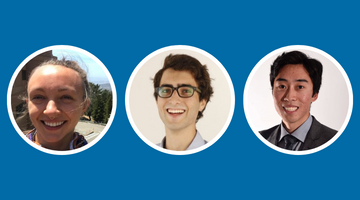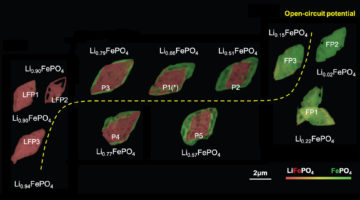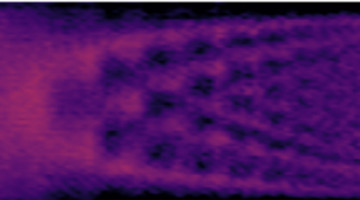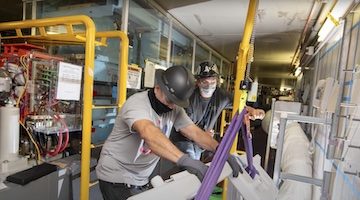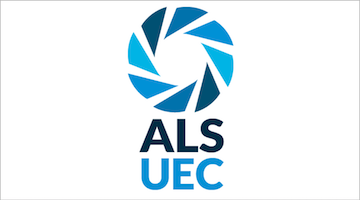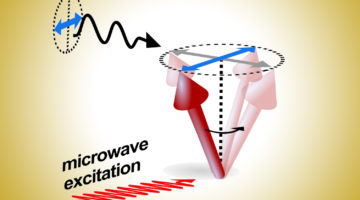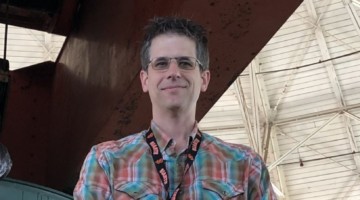Researchers discovered a bacterial enzyme that synthesizes a biopolymer whose repeating units are linked together in way that had not been previously observed. The new polymer is biodegradable and may be biocompatible, with potential for applications ranging from medical therapeutics to eco-friendly plastic alternatives. Read more »![]()
![]()
All News & Updates
Three SCGSR Awardees to Conduct Research at the ALS
The Office of Science Graduate Student Research (SCGSR) program will provide Michelle Devoe (UC Berkeley), Abraham Lewis Levitan (MIT), and Dayne Yoshiki Sasaki (UC Davis) with supplemental awards to conduct research at the ALS in areas that address scientific challenges central to the Office of Science mission. Read more »
A Machine-Learning Approach to Better Batteries
Researchers extracted the relationship between strain and composition in a battery material by applying machine-learning methods to atomic-scale images. The work could lead to more durable batteries and also highlights the potential of integrating microscopy techniques with machine learning to gain insights into complex materials. Read more »![]()
![]()
Looking Inside a Battery with Infrared Light
Researchers have developed a new infrared methodology with unparalleled spatial and chemical imaging capabilities that helps to characterize processes at the interfaces between electrodes and electrolytes, with an eye toward bringing increased safety, lifetime, and energy density to the next-generation solid-state battery market. Read more »
Exploring Critical Synthetic Parameters for Nanoscale ε-Fe2O3 and Their Influence on Magnetic Behaviors
An intermediate polymorph of iron oxide, ε-Fe2O3, has attracted significant attention for potential applications in high-frequency mm-wave absorption and high-density magnetic recording. However, fabrication is still a challenge. Here, we identified critical reaction parameters to improve the phase purity and tested their effects. Read more »
Infrared Probe of Ultrahigh-Quality Nanoribbon Resonators
Researchers found that ribbon-like thin films, grown through a bottom-up, self-assembly approach, can act as ultrahigh-quality nanoscale resonators of lattice vibrations at infrared frequencies. These ultrathin nanostructures are ideal platforms for applications that harness infrared light, such as thermal emission and molecular sensing. Read more »![]()
![]()
Winter 2022 Shutdown Recap
The main driver for the recent shutdown (January to early March) was preparing the storage ring wall for the installation of the ALS-U accumulator ring. Check out the video of all the projects that took place during this shutdown. Read more »
User Meeting Awards, Inclusive Language in UEC Charter
Remember to nominate your colleagues for User Meeting Awards by April 29. The UEC has also updated the Users’ Association charter with more inclusive language. Read more »
Dynamic Measurements of Antiferromagnetically Aligned Spins
Researchers developed a technique that enables time-resolved, direct detection of spin currents in either ferromagnetic or antiferromagnetic materials at GHz frequencies. Studying the dynamic properties of antiferromagnetic spintronic effects could lead to greater stability and faster intrinsic switching speeds compared to conventional spintronics. Read more »
Jeff Troutman, Work Planner and Building Manager
After spending almost two decades at the ALS, Jeff Troutman knows the facility from the top to the tunnels. Find out more about his special way of commemorating special visitors to the ALS. Read more »
- « Previous Page
- 1
- …
- 37
- 38
- 39
- 40
- 41
- …
- 139
- Next Page »

